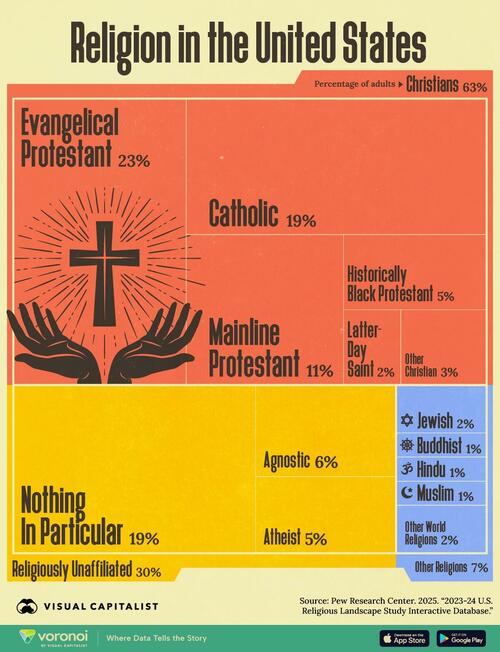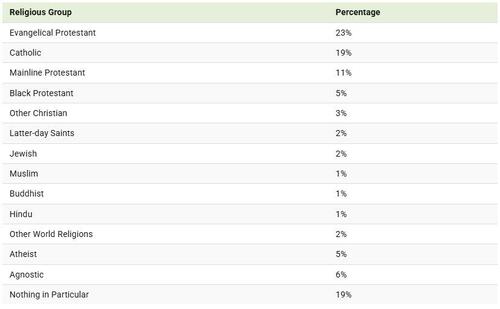Key Takeaways
Christian Majority – 63% of U.S. adults identify as Christian, with Evangelical Protestants (23%) and Catholics (19%) as the largest groups.
Growing Unaffiliated – Nearly 1 in 3 Americans (30%) are religiously unaffiliated.
Despite its dominance, the share of Christians has decreased from 78% in 2007 to 63% in 2024.
The Religious Landscape Study (RLS) was conducted by the Pew Research Center in 2007, 2014, and 2023–24. The study, visualized below by Visual Capitalist's Bruno Venditti, surveys more than 35,000 Americans across all 50 states about their religious affiliations.
After many years of steady decline, the share of Americans who identify as Christian shows signs of leveling off—at least temporarily.
According to the study, the percentage of U.S. adults identifying as Christian declined from 78% in 2007 to 63% in 2023-24. Since 2020, the percentage has remained relatively stable, fluctuating between 62% and 64%.
The largest Christian subgroups in the United States are Protestants, who now make up 40% of U.S. adults, and Catholics at 19%. An additional 3% identify with other Christian groups, including the Greek and Russian Orthodox Churches, the Church of Jesus Christ of Latter-day Saints, Jehovah’s Witnesses, and others.
Both Protestant and Catholic numbers have declined significantly since 2007. However, the Protestant share of the population has remained relatively steady since 2019, while the Catholic share has stabilized since 2014.
Meanwhile, the percentage of Americans identifying with a religion other than Christianity has been gradually increasing, though it remains in the single digits.
Religiously unaffiliated adults—those who identify as atheists, agnostics or as “nothing in particular” when asked about their religion—account for 30% of the population.
The world’s three largest religions have a combined 5 billion followers. To learn more about this topic, check out this graphic on the world’s most popular religions.
Loading...

